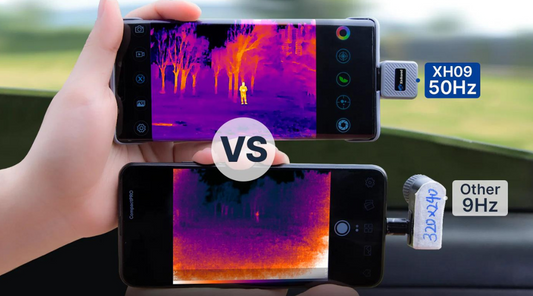3 Insane Ways To Enhance Building Assessments
In the fast-evolving world of construction and real estate, effective building assessments are crucial for ensuring safety, sustainability, and overall functionality. As technology continues to advance, so do the methods available for enhancing these assessments. In this article, we'll explore three insane ways to take your building assessments to the next level, with a special focus on the revolutionary use of thermal imaging.
Method 1: Advanced Technology Integration
In the digital age, incorporating cutting-edge technology into building assessments is no longer optional—it's a necessity. Advanced tools and devices offer unprecedented insights into structural integrity and potential issues. From drones capturing high-resolution images to sensors detecting hidden flaws, technology is reshaping the assessment landscape.
One standout technology in this category is thermal imaging. By capturing infrared radiation, thermal cameras create visual representations of temperature variations in a building. This enables professionals to identify hidden problems such as insulation gaps, electrical issues, and moisture accumulation. Let's take a closer look at the transformative power of thermal imaging.

Focus on Thermal Imaging for Building Assessments
Introduction to Thermal Imaging
Thermal imaging, also known as infrared thermography, involves using cameras that can detect and visualize heat. In building assessments, this technology offers a non-invasive and comprehensive way to identify anomalies that may not be visible to the naked eye.
Benefits of Thermal Imaging
- Early Detection of Issues: Thermal imaging allows professionals to identify potential problems early on, preventing costly repairs in the future. Whether it's detecting water leaks or electrical issues, early intervention is key.
- Energy Efficiency Insights: Thermal imaging provides valuable data on a building's energy efficiency. It helps pinpoint areas of heat loss or gain, allowing for targeted improvements to insulation and HVAC systems.
- Enhanced Safety: Identifying overheating electrical components or malfunctioning equipment through thermal imaging contributes to overall safety in a building.

Method 2: Data-Driven Approaches
Building assessments are no longer solely reliant on visual inspections. The era of data-driven decision-making has arrived, empowering professionals to analyze vast amounts of information for more accurate assessments.
Importance of Data in Building Assessments
Incorporating data into assessments provides a holistic view of a building's performance. From occupancy patterns to energy consumption trends, data-driven approaches enable a deeper understanding of how buildings function over time.
Utilizing Data Analytics
Advanced analytics tools allow professionals to extract actionable insights from data. Machine learning algorithms can predict potential issues based on historical data, enabling preventive measures and reducing the likelihood of unexpected failures.

Method 3: Sustainable Solutions
Sustainability is a key consideration in modern construction practices. Incorporating eco-friendly solutions into building assessments not only aligns with environmental goals but also contributes to long-term cost savings.
Incorporating Sustainability into Assessments
Green building assessments focus on environmentally responsible practices. This includes evaluating materials, energy efficiency, and waste management strategies. Sustainable assessments consider the entire lifecycle of a building.
Benefits of Eco-friendly Assessments
- Cost Savings: Sustainable practices often lead to reduced energy consumption and operational costs over time.
- Marketability: Buildings with green certifications and sustainable features have a competitive edge in the market, attracting environmentally conscious tenants and investors.
- Environmental Impact: Minimizing a building's ecological footprint contributes to broader environmental conservation efforts.

In the ever-evolving field of building assessments, embracing innovation is paramount. The three methods discussed—Advanced Technology Integration, Data-Driven Approaches, and Sustainable Solutions—provide a comprehensive framework for professionals to enhance their assessment processes. Among these, thermal imaging stands out as a revolutionary tool, offering unprecedented insights into a building's performance.
By staying at the forefront of technological advancements and adopting sustainable practices, professionals can ensure their buildings are not only safe and efficient but also contribute positively to the environment. The future of building assessments is here, and it's time to embrace the insane possibilities that lie ahead.



